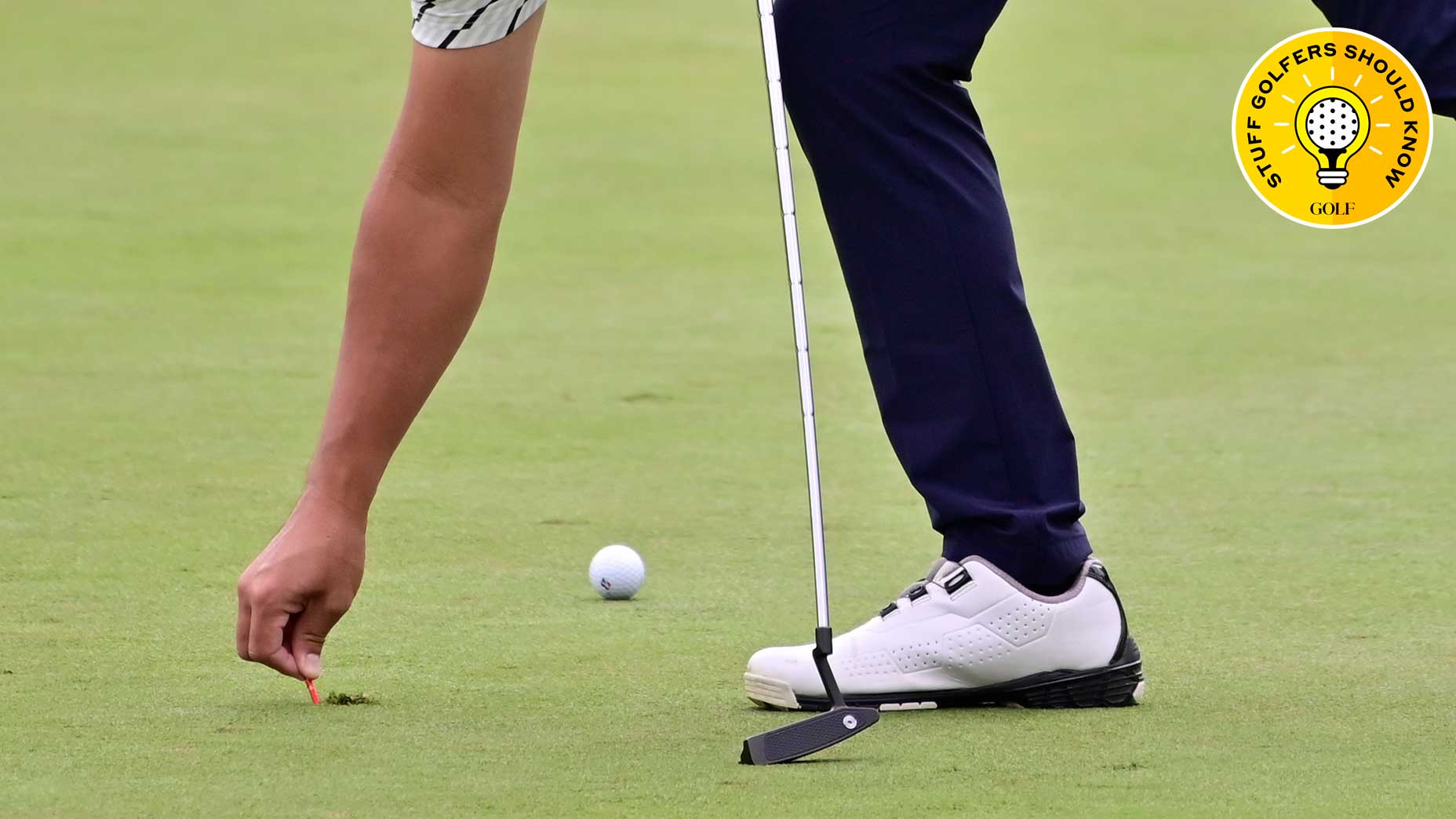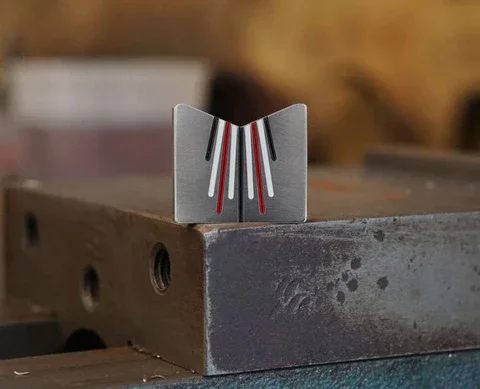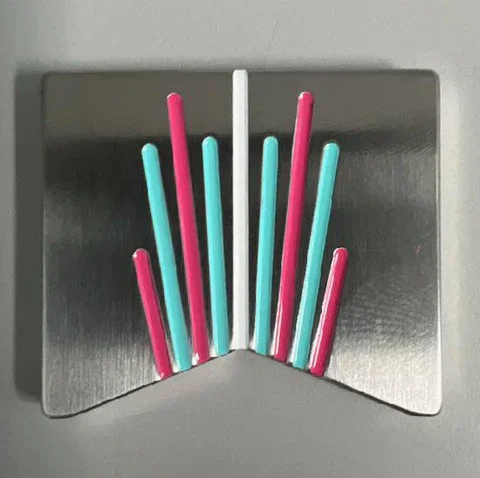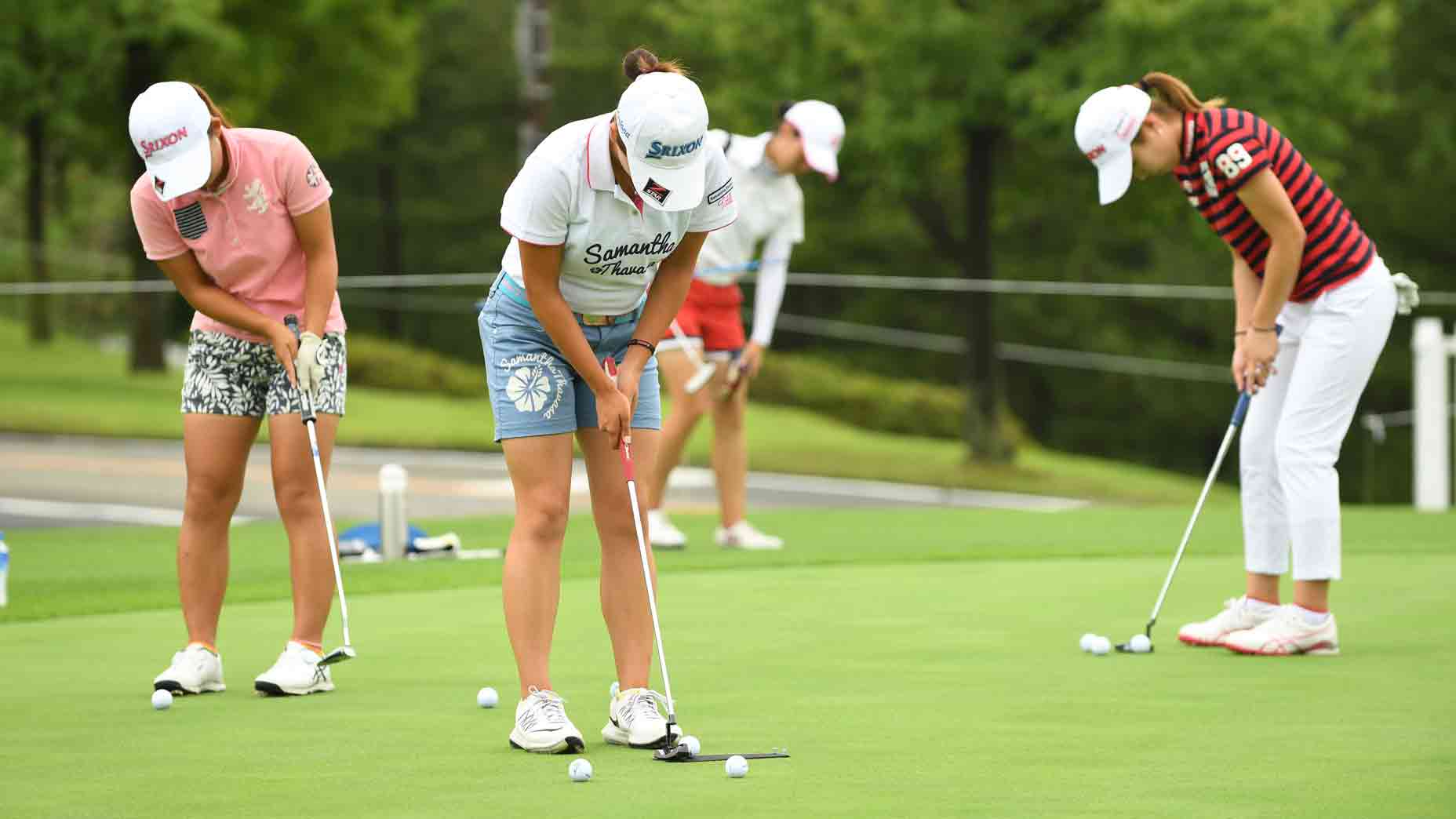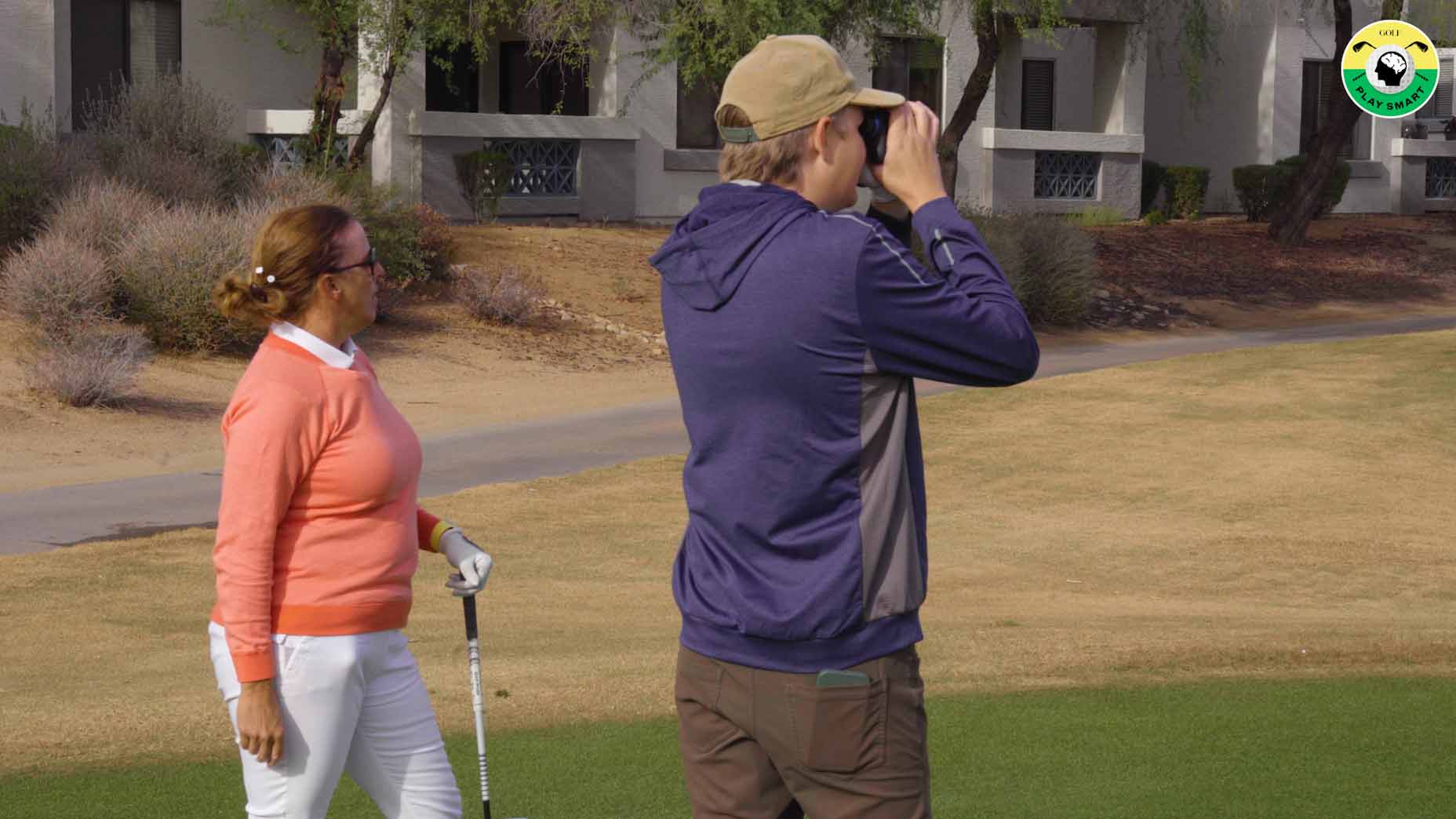Frustrated by aerated greens? Here’s how to keep your cool and make the most of them
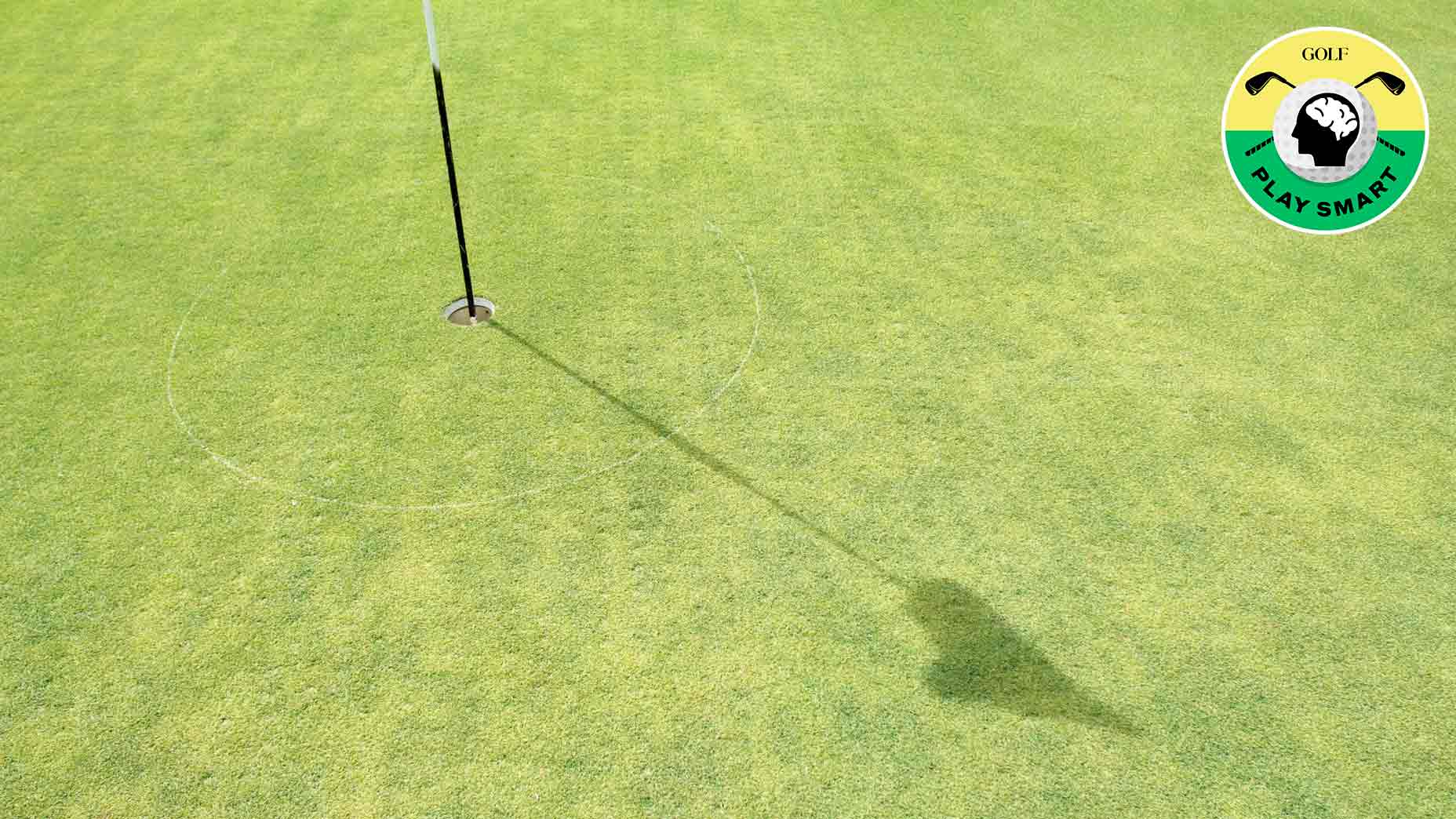
Top 100 Teachers reveal their tips for playing aerated greens.
Getty Images
Welcome to Play Smart, a regular GOLF.com game-improvement column that will help you play smarter, better golf.
Like most golfers this time of year, I’ve been doing my best to sneak in as many rounds as possible, making sure I sharpen my skills as I come out of the depths of winter. While there’s nothing better than spring golf to kickstart the season, that fun can be tempered when you run into [cue dramatic music] aerated greens.
As if golf isn’t already hard enough, when a course is aerating its putting surface, the results can be downright ugly. I would know, as I actually four-putted in a round last week (after initially having a par putt).
Did I want to hurl my putter into the woods? I did! Did I feel frustrated penciling in a 7 (that could have been a 4) on my scorecard? Of course! Were there actions I could have taken to avoid four-putting? Most certainly.
To belatedly glean some advice about how to putt on aerated greens, I reached out to a handful of GOLF Top 100 Teachers, who helped break things down and provide guidance on how to avoid high scores and lots of frustration.
When it comes to putting speed on aerated greens, how much firmer should players hit their putts?
Michael Hunt, Lead Master Instructor – Jim McLean Golf School – “The problem golfers have while playing aerated greens is that they’re used to a certain speed. The greens tend to be much slower [when aerified]. I would recommend thinking about making a longer stroke versus trying to hit the ball harder.”
Tim Cooke, Director of Golf Instruction – The Sea Pines Resort: “The green speed will be slower than normal, so adjust with a longer backstroke to create more distance. But, most important, make the adjustment on the practice green before the round.”
Andrew Rice, Director of Instruction – The Club at Savannah Harbor – “Try to not think about how much harder to hit each putt — your brain has that figured out already!”
Carol Preisinger, Director of Instruction – Kiawah Island Club – “If the holes are filled completely with sand, the roll should be smooth and normal. However, you might putt firmer in the morning, as the moist sand may slow down the roll. As the day progresses with a higher temp and more wind, the greens may speed up.”
Lou Guzzi, PGA Director of Instruction & Coaching: “Most of the time, aerated greens run a bit slower; so hitting the putt a bit firmer is necessary. Unfortunately, aerated greens tend to be bumpy, which creates an inconsistency in the speed of the green. Also, some greens have more sand on them then others, which can make them even faster.”
How do you recommend aiming putts on aerated greens?
Guzzi: “Since most aerated greens tend to be a bit slower, I will adjust my aim and not play as much break in the putts as I would under normal conditions.”
Preisinger: “Learn AimPoint to feel direction and the amount of slope; and pay no attention to the holes. When you find the AimPoint, then look down the edge of your putter shaft to create your line, and you might find some holes to aim for. The USGA says that core aeration only affects 10 percent of the green surface. They rolled five putts with a Stimpmeter before aeration and made all five, then rolled five putts after aeration on a Stimp and made only four of five. Sure, the ball may hit a few holes, but maybe luck will be with you and the ball will hold its line if the holes are filled with sand.”
Hunt: “I would tend to play more break on aerated greens due to the bounces. If the ball is above the hole, it could hit a bump and fall into the hole.”
True Aim Marker
True Aim Marker – Ladies Edition
Do you suggest most amateurs abide by the “automatic two-putt” rule on aerated surfaces?
Guzzi: “I would suggest that we play aerated greens with an automatic gimme when the ball is inside 6 feet. Trying to make the short putts can become a real challenge and make players think that they’re not putting well if they miss a few of them.”
Preisinger: “If it makes them feel better, absolutely… so long as they don’t post their score.”
Cooke: “If the greens are very freshly punched, to reduce frustrations, auto two-putt is a must!”
Hunt: “If you are going out to play, accept the challenge. Golfers don’t two-putt greens when the greens are perfect. If the greens are wet, you have to adjust.”
Is there a different or standard rule you suggest your students use when playing aerated greens?
Preisinger: “Only free relief if the ball sits in a punched hole.”
Hunt: “I think this is more of a mental adjustment more than anything. If you don’t want to bother, just take two putts. The problem is, people three-putt on normal greens. Just know that you’re going to get some good bounces and you are going to get some bad bounces. Embrace the challenge.”
What’s a good practice drill to use before a round on aerated greens?
Guzzi: “Just warm-up as you normally would . Unfortunately, aerated greens are very inconsistent, so you will just have to deal with it until they get back to normal.”
Preisinger: “If the greens are slower than normal, then putt through the fringe to get a sense of speed.”
Rice: “Practice a handful of 20-footers. This should give you a good sense for the speed and how the putts are breaking.”
Cooke: “It’s really all about adjusting to the slower than normal speeds, so hit putts from 20 feet on four directions: uphill, downhill, side hill breaking right, side hill breaking left. Pay close attention to the ball roll and bounce on its path towards the hole with each putt.”
Hunt: “Speed control is still the most important thing. I would have them start with longer putts, getting the player used to making longer strokes. Then I suggest working their way closer to the hole.”
How can a player avoid frustration when routinely missing putts on aerated greens?
Preisinger: “Acceptance… or quitting after 9 holes.”
Rice: “Give yourself a break. This is going to be unpredictable; and you finally have an excuse!”
Hunt: “Keep focusing on speed. That’s all you can control.”
Finally, should players give themselves relief, or accept the (typical) higher score during a round with aerated greens?
Guzzi: “If you know your stroke is solid, you should feel good about your game. I’ve never played any important or competitive rounds during aeration, so I never paid attention to my score.”
Rice: “Know that everybody is dealing with the same challenge, and some are going to handle it worse than others. Commit to having a good approach and you’ll do just fine.”
Cooke: “Both! Accept a higher score, and don’t hit the ball from [an aerated] hole. Instead, move it to the gap between the holes, so at least the ball will get rolling decently in the first couple of feet.”
Hunt: “I would just accept the score you shoot. If you decide to play golf in high winds, you are going to tend to shoot a higher score. This is just another element in golf, so treat it as such. Who knows, you might even go low.”

